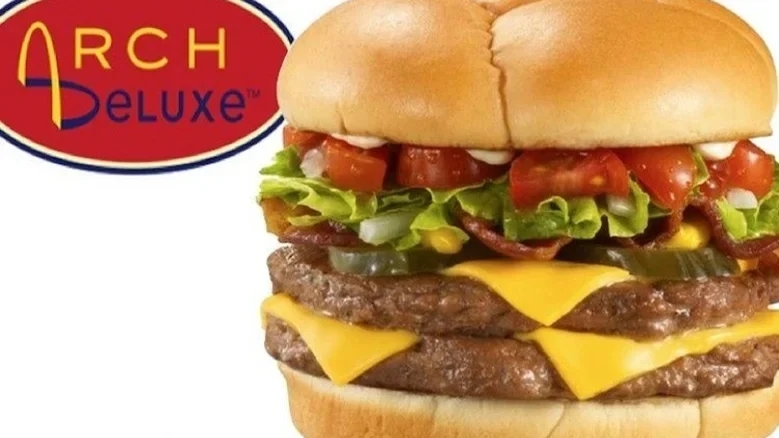The McDonald’s Arch Deluxe burger, launched in mid 1990s, didn’t do well in the market. Although McDonald’s carried out extensive market research and spent over $100 million on the marketing but the product did not take off. In this article, we will try to understand the reasons behind this failure and from this we will try to generalise why products fail?

Vision & strategy behind Arch Deluxe
McDonald’s with the launch of Arch Deluxe aimed to position itself as a more upscale fast-food brand and target the adult market segment. McDonald’s wanted to appeal to older customers who were looking for a higher-quality dining experience.
The vision was to create a burger that offered a more sophisticated flavor profile and premium ingredients. They wanted to develop a burger that would stand out from their traditional menu items and cater to the evolving tastes and preferences of adult consumers.
”The implicit strategy behind the new line is to have a more distinctive product that can command a premium price,”
The memo by Edward H. Rensi, the company’s president and chief executive
The Arch Deluxe featured a quarter-pound beef patty, peppered bacon, lettuce, tomato, American cheese, onions, and a secret mustard-mayonnaise sauce on a potato roll. The burger was positioned as a more gourmet option, with a focus on fresh ingredients and unique flavors.
McDonald’s launched an extensive advertising campaign to promote the Arch Deluxe. It invested millions of dollars in advertising, including TV commercials and print advertisements, to create awareness and generate interest among their target audience. The ads emphasized the premium quality and the idea that the Arch Deluxe was a burger for adults.
Assumptions made while developing Arch Deluxe
- McDonald’s assumed that there was a significant market for a higher-end burger targeted specifically at adult consumers. They believed that customers would be willing to pay a higher price for a gourmet-style burger with unique ingredients.
- McDonald’s assumed that by introducing the Arch Deluxe with its distinctive taste and upscale ingredients, they would create a competitive advantage over other fast-food chains.
- McDonald’s assumed that the Arch Deluxe’s flavors, such as the peppered bacon and special sauce, would be more appealing to adult palates and would provide a unique and satisfying dining experience.
- McDonald’s assumed that their marketing and advertising campaigns would effectively communicate the value and appeal of the Arch Deluxe to the target audience.
- McDonald’s believed that franchisees could easily obtain the special ingredients needed for Arch Delux and generate sufficient sales to make it profitable.
- McDonald’s assumed that existing customers would embrace the Arch Deluxe as a desirable alternative to their traditional menu items. They believed that customers who were looking for a more sophisticated dining experience would be willing to try the new burger and become regular patrons.
Why did McDonald’s Arch Deluxe fail?
McDonald’s envisioned the Arch Deluxe as a game-changer, projected to generate a staggering $1 billion in its first year alone. Their vision included expanding the Deluxe menu to include options like fried chicken, grilled chicken, and fried fish. However, Arch Deluxe failed to deliver on its promise and is remembered as an example of epic failures.
Some of reasons for its failure are :
- McDonald’s used focus groups to test their product and validate their assumptions. NPR suggests that the focus groups were not an actual representative of the average customer. The groups were made up of volunteers, making it likely that they were fans of the brand or fans of burgers. When the burger was actually released to the public, there was significantly less interest.
- According to Eater, McDonald’s franchisees were hesitant to sell it due to the specialised ingredients it required, which proved to be an obstacle to their profitability.
“It was a new burger that required a new sauce, new buns, new lettuce, seasoning,” Selvaggio
- The marketing campaign, featuring kids expressing dislike for the Arch Deluxe, unintentionally distanced the restaurant from its core customer base i.e. families.
- The Arch Deluxe was designed to cater to adult consumers, aiming for a more sophisticated and upscale market segment. However, McDonald’s core customer base primarily consisted of families and younger individuals who preferred their traditional menu items.
- McDonald’s attempted to position the Arch Deluxe as a premium, gourmet burger with higher-quality ingredients. However, this premium positioning clashed with the brand’s established image as a fast-food chain offering affordable and convenient meals.
Despite McDonald’s best efforts, the Arch Deluxe did not achieve the desired success in the market. The burger failed to resonate with consumers, and sales fell short of expectations. Ultimately, the Arch Deluxe was discontinued, and McDonald’s shifted its focus back to its core menu items that had been successful for the brand. The failure of the Arch Deluxe serves as a valuable lesson in the importance of aligning product offerings with customer preferences, validating the assumptions and maintaining consistency in brand positioning.

This piece doesn’t just inform; it evokes a feeling that stays with you, a quiet resonance.
Your writing doesn’t just explain things; it transforms the way we see and understand the world around us.